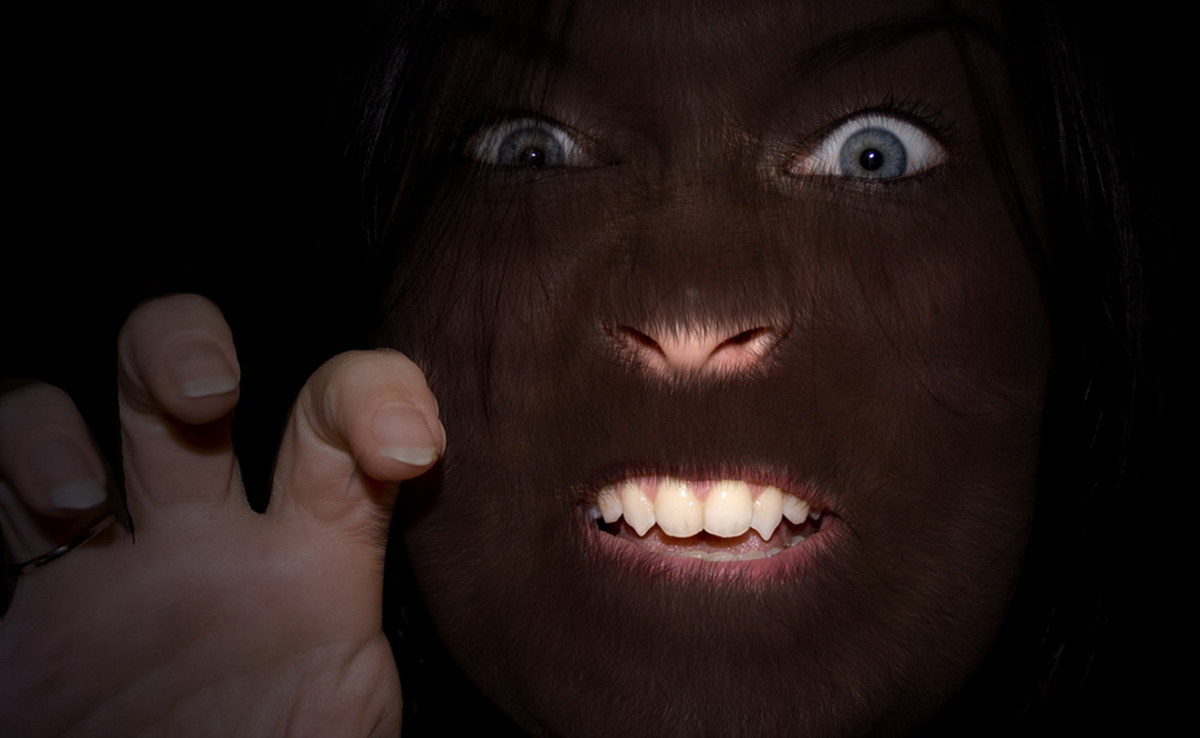Some women long to have long hair, and for others, hair is everything. But having hair that grows all over your body and out of control is nobody’s wish or dream, be it long or short term. This is what happens with those who are unfortunate to suffer from hypertrichosis, also known as Werewolf Syndrome.

It is also known as werewolf syndrome because of the physical appearance of the people who suffer from this disorder. Hypertrichosis can be acquired later in life, or present from birth (congenital). Alternatively, it can be classified based on the hair distribution pattern on the body.
Classification
Based on whether or not the abnormal hair growth is all over the body or confined to a specific area, hypertrichosis can be generalized or localized. It can also be classified based on whether or not it is acquired during lifetime or present from birth.
Congenital hypertrichosis is a form of the disorder that is extremely rare. It is present from birth, and is caused by genetic mutations. Unfortunately, due to the rarity of the disorder, researchers have not yet been able to isolate a specific gene (or molecular error) that could explain the mechanism of the disease. Either way, the congenital variant of the disease can be sub classified according – once again – to the pattern of hair spread. In congenital lanuginosa, the baby is covered with lanugo hair all over the body, except for the palms and soles. As he/she ages, the lanugo hair becomes thin and is shed, leaving only sparse areas of hair. If the hair distribution is prominent in the face and the upper body (for males), it is termed generalized hypertrichosis. If the hair is a type of mature hair (which is thick, coarse and fully pigmented), it is called terminal hypertrichosis. If the hair is only localized to the limbs, the condition is called circumscribed hypertrichosis. Hairy-elbow syndrome is a type of circumscribed hypertrichosis localized to the elbows.
Causes of acquired hypertrichosis include side effects of some drugs, some cancers and even some eating disorders (mechanism undefined). When it is localized, it can be caused by confined trauma and irritation to the affected area of the skin. Generalized hypertrichosis on the other hand can be a sign of an underlying internal malignancy.
Etiology
It is believed that the first reported case of hypertrichosis was the man named Petrus Gonsalvus (1648) of the Canary Islands. In the patient’s family, were also other relatives suffering from the same disorder, namely his two daughters, his son and his grandchild. This highlight the underlining genetic predisposition to the disorder. The mechanism of excessive and uncontrolled hair growth in this disorder is not fully understood, but it is fairly believed that an explanation could lie in the 3 stages of hair cycle: the anagen phase (hair growth), the catagen phase (hair follicle death) and the telogen phase (hair shedding). If there is excessive stimulation during the anagen phase, uncontrolled air growth can occur.
See Also: Hirsutism increased hair growth in women
Differences with Hirsutism
Women who suffer from endocrine problems such as Polycystic Ovarian Syndrome or those who are on hormones (medications) or suffer from congenital adrenal hyperplasia are the ones most commonly affected by hirsutism.
How Can Hypertrichosis Be Treated?
People with acquired hypertrichosis have a much better prognosis compared to people with the congenital variant of the disorder. Simply put, it’s easier to treat a disease when you know its cause compared to when you don’t. For instance, when hypertrichosis is due to a medication, withdrawal of the medication (such as minoxidil) causes reversal of the condition. Similarly, following a trauma to a specific skin area (that might lead to cellular overstimulation), once the wound heals, the abnormal hair growth stops. However, if the disorder is congenital, there is no cure as for today that would suppress the growth of hair.

Nevertheless, although the hair growth in hypertrichosis cannot be stopped, it can definitely be attenuated.
Temporary depilation methods include options such as shaving, depilatories, hair trimming, etc. Epilation (threading, waxing, sugaring, hair plucking) is a much better option as it gives results that actually last for a couple of days to weeks. This is due to the fact that unlike depilation where the hair follicle is simply cut off, epilation actually removes the hair from its roots, thus giving longer lasting results.
If you want to opt for more permanent solutions, then laser hair removal and electrology (that uses electrical current) are the best options. The main setbacks with laser hair removal are the fact that it only works on colored hair (and no white hair), and also has an increased risk of scar formation, skin irritation and wounding. The reason why laser works only for colored hair is because it only targets the melanin color that is present in the lower 1/3 of the hair follicle. And because white hair is free of melanin, it does not respond to laser treatment.
Social Implications
Unfortunately and for reasons that are beyond our control, people suffering from hirsutism are highly discriminated upon. Let’s face it, nobody would willingly choose to have disfiguring facial features, or no child would like to be associated to a wolf for the rest of his/her life. However, this is unfortunately what we commonly observe in communities where a child is suffering from hypertrichosis. Though the disorder is rare, the few occurrences that are reported also highlight a certain level of social discrimination towards the children who suffer from this disorder.
See Also: Permanent Facial Hair Removal
However though, notable figures in popular culture have turned what was once their curse into a blessing, and made a life out of their hypertrichosis. Julia Pastrana for instance, a native from Mexico who suffered from the disorder, was hired in a circus because of her uncanny facial features. Similarly, in 2011, an 11-year old girl originating from Thailand (Supatra Sasupan) was entered in the World Guinness Records as the hairiest child in the world. This might not have cured her condition – undoubtedly – but surely did add to her other reasons to smile every day.
- Photo courtesy of Rachel Carter by Flickr : www.flickr.com/photos/raggle/3058824897
- Photo courtesy of Maderibeyza by Wikimedia Commons : commons.wikimedia.org/wiki/File:Epilat%C3%B6r.JPG


Your thoughts on this